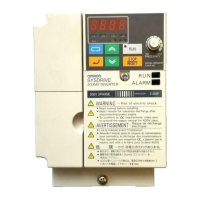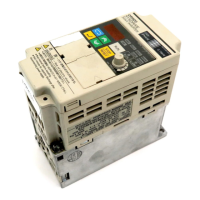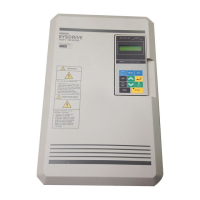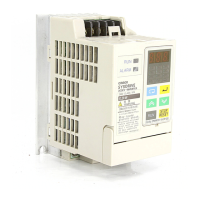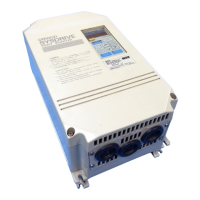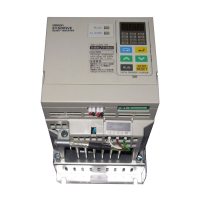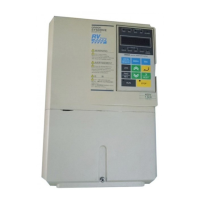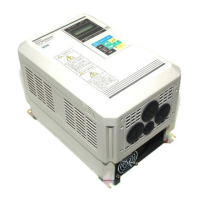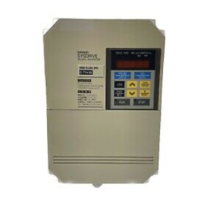6-6
6-2 Energy-saving Control
The energy-saving control function automatically saves unnecessary
power that is uselessly consumed while the load is light.
The Inverter in energy-saving control estimates the capacity of the load
fromthemotorcurrentandcontrolstheoutputvoltage oftheInverterwhen
the load is light so that only the power required is provided to the motor.
Energysavingcontrolissuitableforloadswithlittlefluctuation.Itisnotsuit-
able for control where responses of less than 50ms are required.
The longer the operation time of the Inverter in energy-saving control of a
lightloadis,themoreenergyissaved.Iftheloadexceeds70%oftherated
motor torque, only some energy may be saved.
This control is available to general-purpose Inverters and Inverter-dedi-
cated motors but not applicable to special motors such as spindle motors
or underwater motors.
Energy-saving control is possible in V/f control mode only and does not
operate in vector control mode.
The following description provides details of the operation andadjustment
of the Inverter in energy-saving control.
6-2-1 Energy-saving Control Operation
·The Inverter operates in energy-saving control as described below.
Acceleration
The Inverter accelerates normally and is not in energy-saving control.
Constant Speed
1. WhentheInverterreachesthereferencefrequency,theInverteroperatesinenergy-
saving control.
2. AnidealoutputvoltageiscalculatedfromtheinternalstatusoftheInverterandener-
gy-saving control coefficient K2 in n140.
3. The Inverter changes the output voltage to the calculated voltage.
4. The Inverter goes into probeoperation to find the pointwhere output poweris at the
minimum.
Probe operation: A control method to find the point where the power is at the mini-
mum while changing the voltage according to the probe operation control voltage
step set in n145 and n146.
Advanced Operation Chapter 6
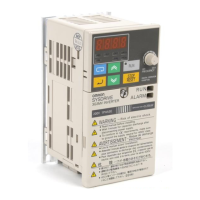
